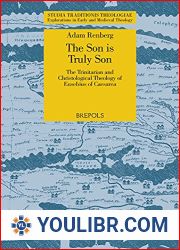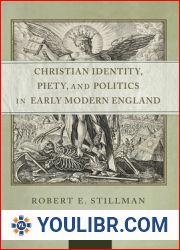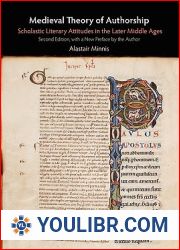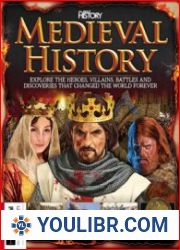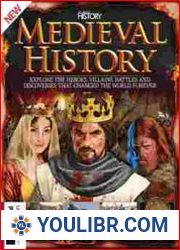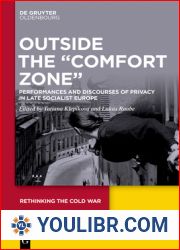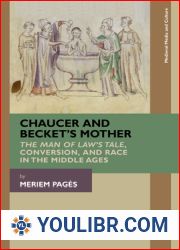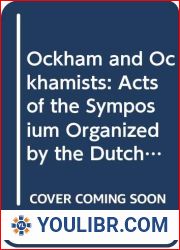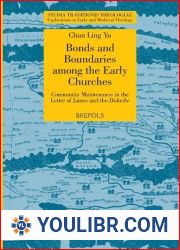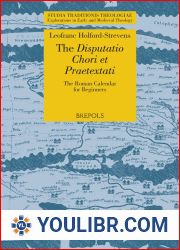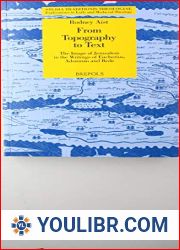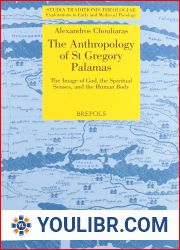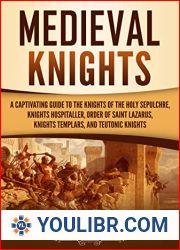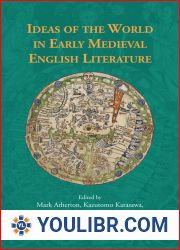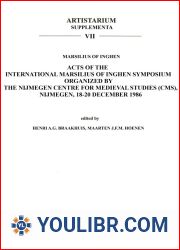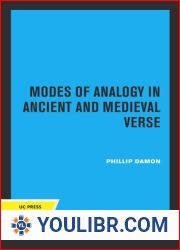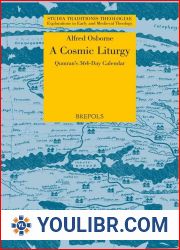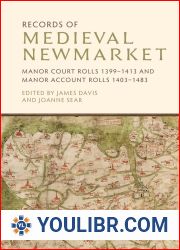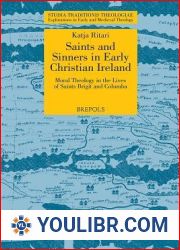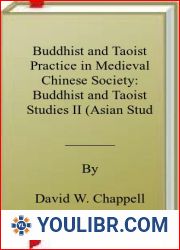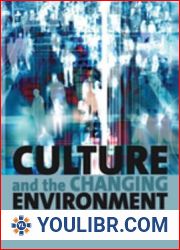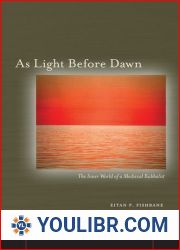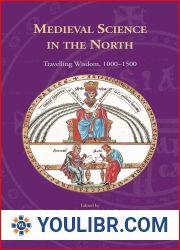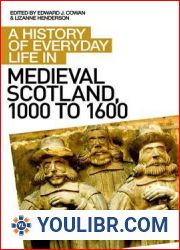
BOOKS - Medieval Cruelty: Changing Perceptions, Late Antiquity to the Early Modern Pe...

Medieval Cruelty: Changing Perceptions, Late Antiquity to the Early Modern Period (Conjunctions of Religion and Power in the Medieval Past)
Author: Daniel Baraz
Year: March 20, 2003
Format: PDF
File size: PDF 28 MB
Language: English

Year: March 20, 2003
Format: PDF
File size: PDF 28 MB
Language: English

Medieval Cruelty: Changing Perceptions from Late Antiquity to the Early Modern Period The book "Medieval Cruelty" by Daniel Baraz offers a fresh perspective on the Middle Ages, challenging the common perception of this era as one marked by widespread brutality and violence. Through a comprehensive analysis of legal texts, philosophical treatises, and literary works, Baraz reveals how the concept of cruelty evolved over time, shaping our understanding of human behavior and power dynamics. This detailed description delves into the historical context and significance of the book, making it accessible to readers who may not be familiar with the subject matter. A New Perspective on the Middle Ages The Middle Ages are often associated with cruelty, thanks to the anti-Catholic polemics of the Reformation. However, Daniel Baraz's groundbreaking work challenges this view, showing that the concept of cruelty was not a major concern during the early Middle Ages until the thirteenth century. As the focus on cruelty increased throughout the sixteenth century, it became a central theme in legal texts, philosophical treatises, and other works that explored its nature. This shift in attention marked a significant turning point in the development of ethical thought and practice. From Seneca to Montaigne Medieval Cruelty spans from the writings of Seneca to those of Montaigne, drawing from a diverse range of sources, including Western Christian, Eastern Christian, and Muslim perspectives. The book examines the evolution of the concept of cruelty, tracing its transformation from an external force to an internal tool for differentiating groups and justifying violence against them.
Средневековая жестокость: изменение восприятия от поздней античности к раннему современному периоду Книга «Средневековая жестокость» Даниэля Бараца предлагает новый взгляд на Средние века, бросая вызов общему восприятию этой эпохи как эпохи, отмеченной широко распространенной жестокостью и насилием. Посредством всестороннего анализа юридических текстов, философских трактатов и литературных произведений Барац раскрывает, как концепция жестокости развивалась с течением времени, формируя наше понимание поведения человека и динамику власти. Это подробное описание углубляется в исторический контекст и значение книги, делая её доступной для читателей, которые могут быть не знакомы с предметом. Новый взгляд на Средневековье Средневековье часто ассоциируется с жестокостью, благодаря антикатолической полемике Реформации. Тем не менее, новаторская работа Даниэля Бараза бросает вызов этой точке зрения, показывая, что концепция жестокости не была серьезной проблемой в течение раннего Средневековья до тринадцатого века. Поскольку внимание к жестокости увеличивалось на протяжении всего XVI века, она стала центральной темой в юридических текстах, философских трактатах и других работах, которые исследовали её природу. Это смещение внимания ознаменовало значительный перелом в развитии этической мысли и практики. От Сенеки до Монтеня Средневековая жестокость охватывает от сочинений Сенеки до сочинений Монтеня, опираясь на различные источники, включая западные христианские, восточные христианские и мусульманские перспективы. В книге рассматривается эволюция понятия жестокости, прослеживается её трансформация из внешней силы во внутренний инструмент дифференциации групп и оправдания насилия над ними.
La cruauté médiévale : un changement de perception de l'antiquité tardive à la première période moderne livre « La cruauté médiévale » de Daniel Baratz propose une nouvelle vision du Moyen Age, remettant en question la perception générale de cette époque comme une époque marquée par la cruauté et la violence généralisées. Au moyen d'une analyse complète des textes juridiques, des traités philosophiques et des œuvres littéraires, Baratz révèle comment le concept de cruauté a évolué au fil du temps, façonnant notre compréhension du comportement humain et de la dynamique du pouvoir. Cette description détaillée est approfondie dans le contexte historique et la signification du livre, le rendant accessible aux lecteurs qui ne connaissent peut-être pas le sujet. Une nouvelle vision du Moyen Age est souvent associée à la cruauté, grâce à la controverse anti-catholique de la Réforme. Cependant, le travail novateur de Daniel Baraz remet en question ce point de vue, montrant que la notion de cruauté n'a pas été un problème majeur au début du Moyen Age jusqu'au treizième siècle. Comme l'attention à la cruauté a augmenté tout au long du XVIe siècle, elle est devenue un sujet central dans les textes juridiques, les traités philosophiques et d'autres ouvrages qui ont exploré sa nature. Ce décalage a marqué un tournant important dans le développement de la pensée et de la pratique éthiques. De Sénèque à Montaigne, la cruauté médiévale s'étend des écrits de Sénèque aux écrits de Montaigne, en s'appuyant sur diverses sources, y compris les perspectives chrétiennes occidentales, chrétiennes orientales et musulmanes. livre examine l'évolution de la notion de cruauté et montre sa transformation d'une force extérieure à un outil interne de différenciation des groupes et de justification de la violence contre eux.
Brutalidad medieval: el cambio de percepción de la antigüedad tardía a la Edad Moderna libro La crueldad medieval de Daniel Barac ofrece una nueva visión de la Edad Media, desafiando la percepción general de esta época como una época marcada por la crueldad y la violencia generalizadas. A través de un análisis exhaustivo de textos jurídicos, tratados filosóficos y obras literarias, Barac revela cómo el concepto de crueldad ha evolucionado a lo largo del tiempo, moldeando nuestra comprensión del comportamiento humano y la dinámica del poder. Esta detallada descripción profundiza en el contexto histórico y el significado del libro, haciéndolo accesible a lectores que pueden no estar familiarizados con el tema. Una nueva visión de la Edad Media a menudo se asocia con la crueldad, gracias a la polémica anticatólica de la Reforma. n embargo, la obra pionera de Daniel Baraz desafía este punto de vista, demostrando que el concepto de crueldad no fue un problema importante durante la Edad Media temprana hasta el siglo XIII. A medida que la atención a la crueldad aumentó a lo largo del siglo XVI, se convirtió en un tema central en textos legales, tratados filosóficos y otras obras que exploraron su naturaleza. Este cambio de enfoque marcó un punto de inflexión significativo en el desarrollo del pensamiento y la práctica ética. Desde Séneca hasta Montaigne, la crueldad medieval abarca desde los escritos de Séneca hasta los de Montaigne, apoyándose en diversas fuentes, incluyendo las perspectivas cristianas occidentales, cristianas orientales y musulmanas. libro aborda la evolución del concepto de crueldad, traza su transformación de fuerza externa a herramienta interna para diferenciar a los grupos y justificar la violencia contra ellos.
Crueldade medieval: mudança de percepção da antiguidade para o período moderno inicial O livro «Crueldade medieval», de Daniel Baratz, oferece uma nova visão da Idade Média, desafiando a percepção geral desta era como uma época marcada pela violência e violência generalizadas. Através de uma análise completa de textos legais, tratados filosóficos e obras literárias, Baratz revela como o conceito de crueldade evoluiu ao longo do tempo, formando a nossa compreensão do comportamento humano e a dinâmica do poder. Esta descrição detalhada aprofunda o contexto histórico e o significado do livro, tornando-o acessível aos leitores que podem não estar familiarizados com o assunto. A nova visão da Idade Média é frequentemente associada à crueldade, devido à polémica anticatólica da Reforma. No entanto, o trabalho inovador de Daniel Baraz desafia este ponto de vista, mostrando que o conceito de crueldade não foi um problema grave no início da Idade Média até o século 13. Como a crueldade aumentou durante todo o século XVI, tornou-se um tema central nos textos legais, tratados filosóficos e outros trabalhos que exploraram sua natureza. Esta mudança de atenção marcou uma fratura significativa no desenvolvimento do pensamento ético e da prática. De Seneca a Montenegro, a crueldade medieval abrange desde os escritos de Seneca até os escritos de Montenegro, com base em várias fontes, incluindo as perspectivas cristãs ocidentais, cristãs orientais e muçulmanas. O livro aborda a evolução do conceito de crueldade e mostra a sua transformação de uma força externa para um instrumento interno para diferenciar os grupos e justificar a violência contra eles.
Crudeltà medievale: il cambiamento della percezione dall'antichità all'epoca moderna precoce Il libro «La violenza medievale» di Daniel Baratz offre una nuova visione del Medioevo, sfidando la percezione comune di questa epoca come epoca segnata da violenza e violenza diffusa. Attraverso un'analisi completa dei testi legali, dei trattati filosofici e delle opere letterarie, Baratz rivela come il concetto di crudeltà si sia evoluto nel tempo, formando la nostra comprensione del comportamento umano e le dinamiche di potere. Questa descrizione dettagliata approfondisce il contesto storico e il significato del libro, rendendolo accessibile ai lettori che potrebbero non conoscere l'oggetto. La nuova visione del Medioevo è spesso associata alla crudeltà grazie alla polemica anticatolica della Riforma. Tuttavia, il lavoro innovativo di Daniel Baraz sfida questo punto di vista, dimostrando che il concetto di crudeltà non è stato un problema grave durante il primo Medioevo fino al tredicesimo secolo. Poiché l'attenzione verso la crudeltà è aumentata durante tutto il XVI secolo, è diventata un tema centrale nei testi legali, nei trattati filosofici e in altri lavori che ne hanno esplorato la natura. Questo spostamento di attenzione ha segnato una frattura significativa nello sviluppo del pensiero etico e della pratica. Da Seneca a Monten, la crudeltà medievale va dagli scritti di Seneca a quelli di Monten, basandosi su varie fonti, tra cui le prospettive cristiane occidentali, orientali cristiane e musulmane. Il libro descrive l'evoluzione del concetto di crudeltà, la sua trasformazione da una forza esterna a uno strumento interno per differenziare i gruppi e giustificare la violenza contro di essi.
Mittelalterliche Grausamkeit: Wahrnehmungswandel von der Spätantike zur frühen Neuzeit Das Buch „Mittelalterliche Grausamkeit“ von Daniel Baratz bietet einen neuen Blick auf das Mittelalter und fordert die allgemeine Wahrnehmung dieser Epoche als von weit verbreiteter Grausamkeit und Gewalt geprägte Epoche heraus. Durch eine umfassende Analyse von Gesetzestexten, philosophischen Abhandlungen und literarischen Werken zeigt Barac, wie sich der Begriff der Grausamkeit im Laufe der Zeit entwickelt hat und unser Verständnis des menschlichen Verhaltens und der Dynamik der Macht prägt. Diese detaillierte Beschreibung vertieft sich in den historischen Kontext und die Bedeutung des Buches und macht es für ser zugänglich, die mit dem Thema möglicherweise nicht vertraut sind. Ein neuer Blick auf das Mittelalter Das Mittelalter ist oft mit Grausamkeit verbunden, dank der antikatholischen Kontroverse der Reformation. Die bahnbrechende Arbeit von Daniel Baraz stellt diese chtweise jedoch in Frage und zeigt, dass der Begriff der Grausamkeit während des frühen Mittelalters bis zum dreizehnten Jahrhundert kein ernstes Problem darstellte. Da die Aufmerksamkeit für Grausamkeit im Laufe des 16. Jahrhunderts zunahm, wurde sie zu einem zentralen Thema in Gesetzestexten, philosophischen Abhandlungen und anderen Werken, die ihre Natur erforschten. Diese Verschiebung der Aufmerksamkeit markierte einen bedeutenden Wendepunkt in der Entwicklung des ethischen Denkens und der ethischen Praxis. Von Seneca bis Montaigne Die mittelalterliche Grausamkeit reicht von Senecas Schriften bis zu Montaignes Schriften und stützt sich auf verschiedene Quellen, darunter westliche christliche, östliche christliche und muslimische Perspektiven. Das Buch untersucht die Entwicklung des Begriffs der Grausamkeit, verfolgt seine Transformation von einer äußeren Kraft in ein inneres Instrument zur Differenzierung von Gruppen und zur Rechtfertigung von Gewalt gegen sie.
Medieval Cruelty: Changing Perfections from Late Antiquity to the Early Modern Time הספר ”Medieval Cruelty” מאת דניאל באראץ מציע נקודת מבט חדשה על ימי הביניים, וקורא תיגר על התפיסה הכללית של תקופה זו. באמצעות ניתוח מקיף של טקסטים משפטיים, מסות פילוסופיות ויצירות ספרותיות, באראץ חושף כיצד התפתח מושג האכזריות לאורך זמן, ועיצב את הבנתנו לגבי התנהגות האדם ודינמיקת הכוח. תיאור מפורט זה מתעמק בהקשר ההיסטורי ובמשמעות של הספר, וכך הוא נגיש לקוראים שאינם מכירים את הנושא. השקפה חדשה על ימי הביניים קשורה בדרך כלל לאכזריות, הודות לפולמוס האנטי-קתולי של הרפורמציה. למרות זאת, עבודתו החלוצית של דניאל ברז מאתגרת השקפה זו, ומראה שמושג האכזריות לא היווה בעיה חמורה בימי הביניים הראשונים עד המאה ה ־ 13. ככל שהתגברה תשומת הלב לאכזריות במהלך המאה ה ־ 16, היא הפכה לנושא מרכזי בטקסטים משפטיים, במסות פילוסופיות ובעבודות אחרות שחקרו את טבעו. שינוי זה בתשומת לב סימן נקודת מפנה משמעותית בהתפתחות המחשבה והתרגול האתיים. מסנקה ועד מונטיין, האכזריות בימי הביניים משתרעת מכתביו של סנקה ועד למונטיין, ומושכת אליה מגוון של מקורות, כולל פרספקטיבות נוצריות מערביות, נוצריות מזרחיות ומוסלמיות. הספר בוחן את התפתחות מושג האכזריות, עוקב אחר הפיכתה מכוח חיצוני לכלי פנימי להבדלת קבוצות ולהצדקת האלימות נגדן.''
Ortaçağ Zulmü: Geç Antik Çağ'dan Erken Modern Döneme Değişen Algılar Daniel Baratz'ın "Ortaçağ Zulmü" kitabı, Orta Çağ'a yeni bir bakış açısı getirerek, bu dönemin yaygın zulüm ve şiddetle işaretlenmiş genel algısına meydan okuyor. Yasal metinlerin, felsefi incelemelerin ve edebi eserlerin kapsamlı bir analiziyle Baratz, zulüm kavramının zaman içinde nasıl geliştiğini, insan davranışı ve güç dinamikleri anlayışımızı şekillendirdiğini ortaya koyuyor. Bu ayrıntılı açıklama, kitabın tarihsel bağlamını ve anlamını inceleyerek, konuya aşina olmayan okuyucular için erişilebilir olmasını sağlar. Orta Çağ'ın yeni bir görüşü, Reform'un Katolik karşıtı polemiği sayesinde genellikle zalimlikle ilişkilendirilir. Bununla birlikte, Daniel Baraz'ın öncü çalışması, zulüm kavramının Orta Çağ'ın başlarında on üçüncü yüzyıla kadar ciddi bir sorun olmadığını göstererek bu görüşe meydan okuyor. 16. yüzyıl boyunca zulme dikkat arttıkça, yasal metinlerde, felsefi incelemelerde ve doğasını araştıran diğer eserlerde merkezi bir tema haline geldi. Dikkatteki bu değişim, etik düşünce ve uygulamanın gelişiminde önemli bir dönüm noktası oldu. Ortaçağ zulmü, Seneca'nın yazılarından Montaigne'e kadar uzanır ve Batı Hristiyanlığı, Doğu Hristiyanlığı ve Müslüman bakış açıları gibi çeşitli kaynaklardan yararlanır. Kitap, zulüm kavramının evrimini inceliyor, bunun dışsal bir güçten grupları farklılaştırmak ve onlara yönelik şiddeti haklı çıkarmak için içsel bir araca dönüşümünü izliyor.
قسوة العصور الوسطى: تغيير التصورات من العصور القديمة المتأخرة إلى العصر الحديث المبكر يقدم كتاب «قسوة العصور الوسطى» لدانيال باراتز منظورًا جديدًا للعصور الوسطى، متحديًا التصور العام لهذه الحقبة باعتبارها حقبة تميزت بالقسوة والعنف على نطاق واسع. من خلال تحليل شامل للنصوص القانونية والأطروحات الفلسفية والأعمال الأدبية، يكشف باراتز كيف تطور مفهوم القسوة بمرور الوقت، مما شكل فهمنا للسلوك البشري وديناميكيات القوة. يتعمق هذا الوصف التفصيلي في السياق التاريخي للكتاب ومعناه، مما يجعله في متناول القراء الذين قد لا يكونون على دراية بالموضوع. غالبًا ما ترتبط النظرة الجديدة للعصور الوسطى بالقسوة، وذلك بفضل الجدل المناهض للكاثوليكية للإصلاح. ومع ذلك، فإن عمل دانيال باراز الرائد يتحدى هذا الرأي، مما يدل على أن مفهوم القسوة لم يكن مشكلة خطيرة خلال العصور الوسطى المبكرة حتى القرن الثالث عشر. مع ازدياد الاهتمام بالقسوة طوال القرن السادس عشر، أصبح موضوعًا رئيسيًا في النصوص القانونية والأطروحات الفلسفية وغيرها من الأعمال التي استكشفت طبيعتها. كان هذا التحول في الاهتمام نقطة تحول مهمة في تطوير الفكر والممارسة الأخلاقية. من سينيكا إلى مونتين تمتد القسوة في العصور الوسطى من كتابات سينيكا إلى كتابات مونتين، بالاعتماد على مجموعة متنوعة من المصادر بما في ذلك وجهات النظر المسيحية الغربية والمسيحية الشرقية والمسلمة. يبحث الكتاب في تطور مفهوم القسوة، ويتتبع تحوله من قوة خارجية إلى أداة داخلية للتمييز بين الجماعات وتبرير العنف ضدها.
중세 잔인 함: 후기 고대에서 초기 근대로 인식을 바꾸는 Daniel Baratz의 "Medieval Cruelty" 책은 중세에 대한 새로운 관점을 제공하여 광범위한 잔인 함과 폭력으로 표시된이 시대의 일반적인 인식에 도전합니다. Baratz는 법률 텍스트, 철학적 논문 및 문학 작품에 대한 포괄적 인 분석을 통해 잔인한 개념이 시간이 지남에 따라 어떻게 진화하여 인간의 행동과 권력 역학에 대한 이해를 형성했는지 밝힙니다. 이 자세한 설명은이 책의 역사적 맥락과 의미를 탐구하여 주제에 익숙하지 않은 독자가 액세스 할 수 있도록합니다. 종교 개혁의 반 가톨릭 논쟁 덕분에 중세에 대한 새로운 견해는 종종 잔인 함과 관련이 있습니다. 그럼에도 불구하고 Daniel Baraz의 선구적인 작업은이 견해에 도전하여 잔인한 개념이 중세 초기부터 13 세기까지 심각한 문제가되지 않았 음을 보여줍니다. 16 세기 내내 잔인 함에 대한 관심이 높아짐에 따라 법률 텍스트, 철학적 논문 및 그 본질을 탐구 한 기타 작품의 중심 주제가되었습니다. 이러한 관심의 변화는 윤리적 사고와 실천의 발전에 중요한 전환점이되었습니다. Seneca에서 Montaigne에 이르기까지 중세의 잔인 함은 Seneca의 저술에서 Montaigne에 이르기까지 서양 기독교, 동방 기독교 및 무슬림 관점을 포함한 다양한 출처를 바탕으로합니다. 이 책은 잔인한 개념의 진화를 조사하고, 외부 세력에서 집단을 구별하고 그들에 대한 폭력을 정당화하기위한 내부 도구로의 전환을 추적합니다.
中世紀的殘酷:從上古晚期到現代早期的觀念的變化丹尼爾·巴拉茨(Daniel Baratz)的《中世紀的殘酷》一書提供了中世紀的新視角,挑戰了人們對這個時代的普遍看法,這個時代以廣泛的殘酷和暴力為標誌。通過對法律文本,哲學論文和文學作品的全面分析,巴拉茨揭示了殘酷的概念如何隨著時間的流逝而發展,從而塑造了我們對人類行為和權力動態的理解。這本書的詳細描述深入探討了該書的歷史背景和意義,使可能不熟悉該主題的讀者可以使用。由於宗教改革的反天主教爭議,中世紀的新觀點通常與殘酷有關。但是,丹尼爾·巴拉茲(Daniel Baraz)的開創性工作挑戰了這一觀點,表明殘酷的概念在中世紀早期直到13世紀都不是主要問題。隨著對殘酷的關註在整個16世紀不斷增加,它成為法律文本,哲學論文和其他探索其性質的著作的中心主題。這種註意力的轉移標誌著道德思想和實踐發展的重大轉變。從塞內卡到蒙蒂尼,中世紀的殘酷行為從塞內卡的著作到蒙蒂尼的著作,都借鑒了包括西方基督教,東方基督教和穆斯林觀點在內的各種來源。該書探討了殘酷概念的演變,並追溯了其從外部力量轉變為區分群體並為暴力辯護的內部工具。







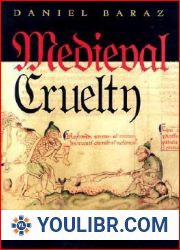



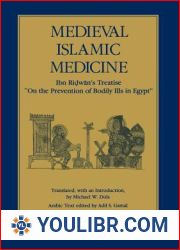
![Journal of a residence in the Sandwich Islands, during the years 1823, 1824, and 1825 … By C.S. Stewart, late missionary at the Sandwich Islands … Volume v. 1 1828 [Leather Bound] Journal of a residence in the Sandwich Islands, during the years 1823, 1824, and 1825 … By C.S. Stewart, late missionary at the Sandwich Islands … Volume v. 1 1828 [Leather Bound]](https://youlibr.com/img/6/623590_oc.jpg)
